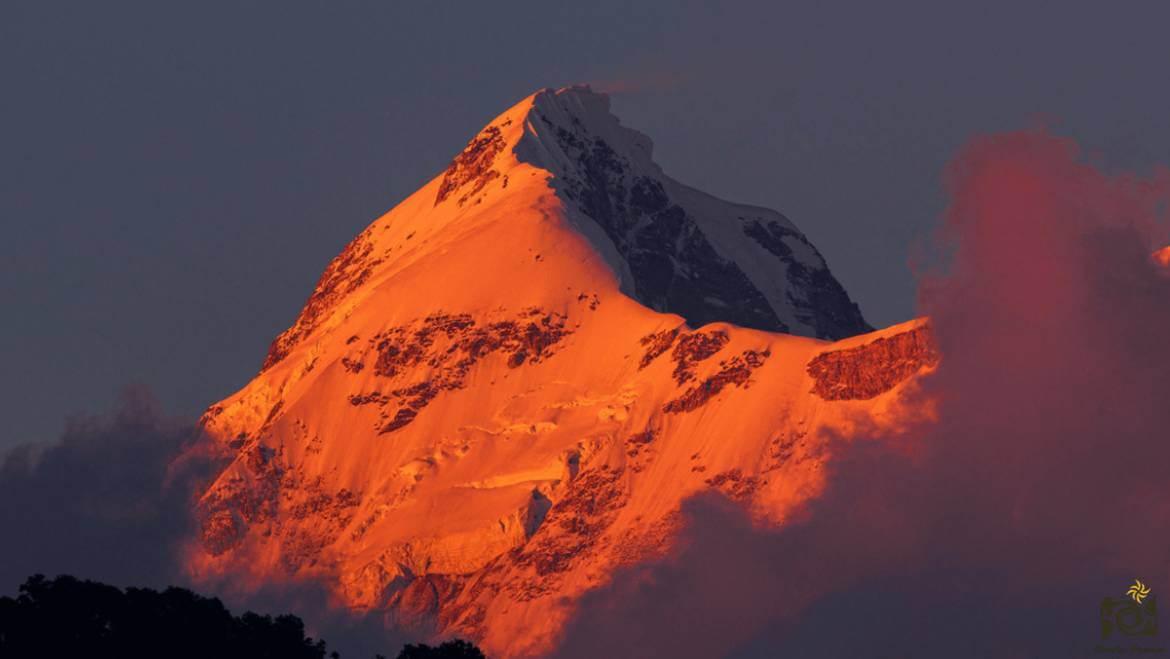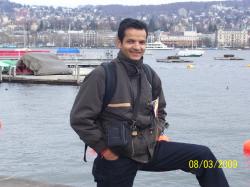Home to a sea of 6Thousander and few 7 Thousander peaks, Uttarakhand is the paradise for the lusting mountaineers who are on a constant quest for a new experience and conquest. Not to forget, Uttarakhand boasts housing the highest peak in India, Nanda Devi East at a dizzying height of 7816 m that of course makes for an excellent adrenaline-rushing peak climbing expedition. The state also possesses one of its kind mountain peaks in the form of Kedar Dome that offers skiing opportunity along with climbing, unbridled and imposing peaks of Himalayas. This blog here talks about the top 20 peaks for climbing in Uttarakhand Himalaya. So, without further ado, let’s get to the list.
Popular Peak Climbing Peaks in Uttarakhand, Himalayas
| Kedarnath Peak |
6992mts / 22935ft |
| Trishul I Peak |
7145mts /23435 ft |
| Nanda Ghunti Peak |
6309mts/ 20695ft |
| Gangotri II Peak |
6590mts /21615ft |
| Joanali Peak |
6632mts /21750ft |
| Thalaysagar Peak |
6904mts /22645ft |
| Meru North Peak |
6450mts /21156ft |
| Kedar Dome Peak |
6830mts /22400ft |
| Shivling Peak |
6543mts /21460ft |
| Vasuki Parvat |
6792mts /2227ft |
| Satopanth Peak |
7075mts /23205ft |
| Sudarshan Parbat |
6507mts /21345ft |
| Changabang Peak |
6866mts /22520ft |
| Nilkantha Peak |
6597mts /21640 ft |
| Chaukhamba I Peak |
7138mts /23415 ft |
| Chaukhamba II Peak |
7070mts /23190ft |
| Nanda Devi East Peak |
7816mts /25635ft |
| Panwali Dwar Peak |
6663mts /21855ft |
| Maiktoli Peaks |
6803mts /22315ft |
| Nanda Kot Peak |
6861mts /22505ft |
Best Selling Peak Expedition Tours in Himalayas
Kedarnath Peak (6992mts/22935ft)
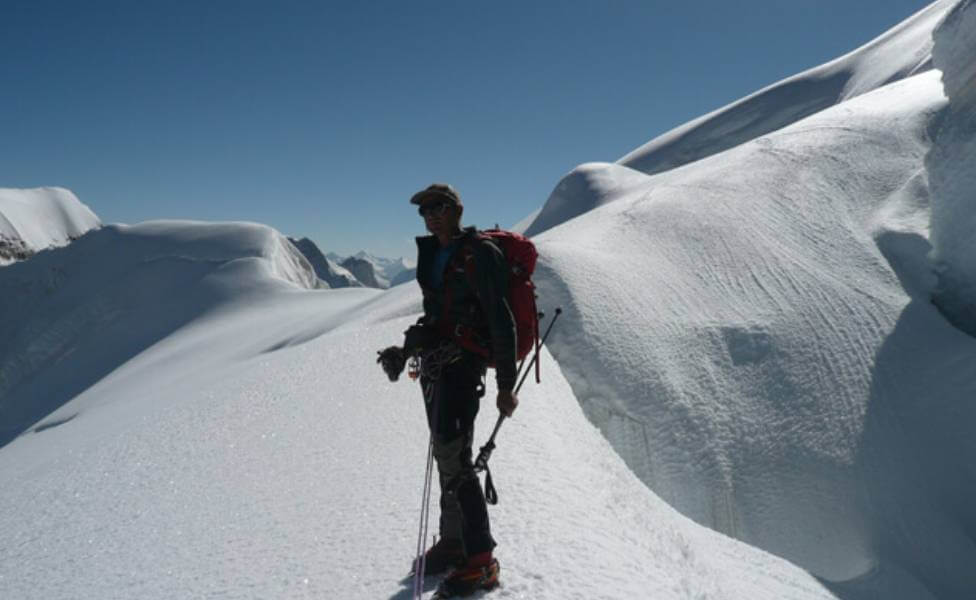
Part of the Gangotri Group of Peaks, Kedarnath stands tall with a height of 6992 m. This 6-thousander meters peak is situated to the south of the popular Kedardome peak and Gangotri Glacier makes for a memorable peak climbing adventure in the Gangotri region of Garhwal Himalayas. It is the highest peak towards the south of Gangotri Glacier and has two climbing routes, Northwest Flank and East Face, out of which Northwest Flank is the easier one. Kedarnath Peak that faces temple is somewhat a vertical wall which has an easier ascent. It has Mt Kedardome on the left and Bharte Kuntha and Kirti Stambh on the right. The base camp for Kedarnath Peak is at above Tapovan. The route for the advance base camp of the peak skirts around the slopes of Shivling and then entered Kirti Glacier and is not an easy drill. Snow-laden and full of avalanche prone gullies, Kedarnath is a challenging expedition that not only requires skill and strength but immense determination as well.
Also Read: Trekking Peaks in India
Trishul I Peak (7145mts/23435 ft)
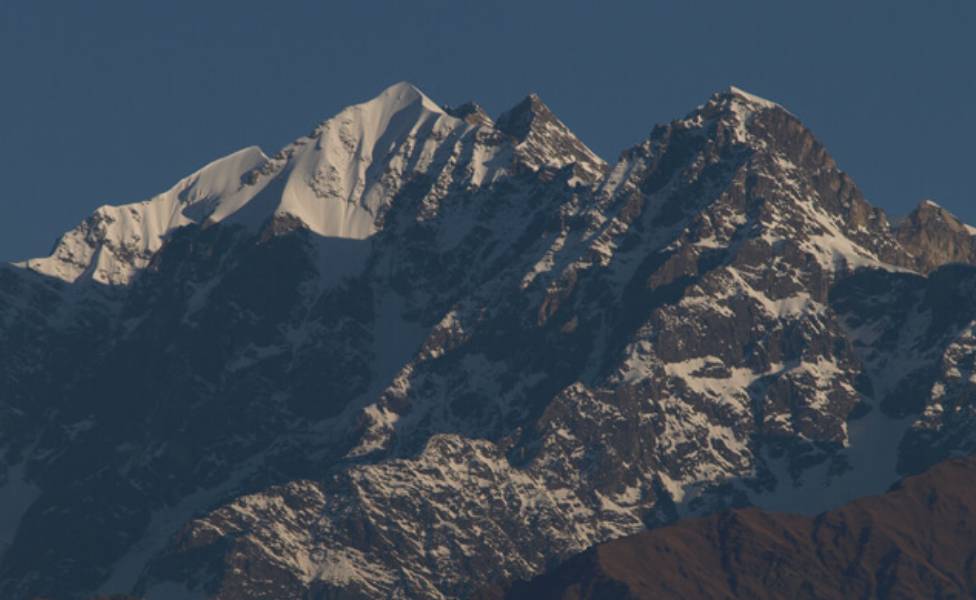
The visually spectacular Trishul Massif that resembles the Trident of Lord Shiva is said to be the first peak climbed in the Garhwal Himalayas. And today this majestic mountain is amongst the most preferred peak climbing expeditions in Garhwal. Trishul I is the tallest peak amongst the unique trident and is 7145 m high. It is also one of the challenging summit bids as the mountaineers make slow progress due to high wind speed and poor snow/ice conditions. The climb to Trishul I begin from Chandinaya Ghat, which is its base camp, and from there an arduous ascend in the mountain starts via Ronti Gad Glacier which is at a height of about 5020 m. The best time to attempt summit bid on this peak is between July and September.
Also Read: Ladakh Trekking Peaks
Nanda Ghunti Peak (6309mts/20695ft)
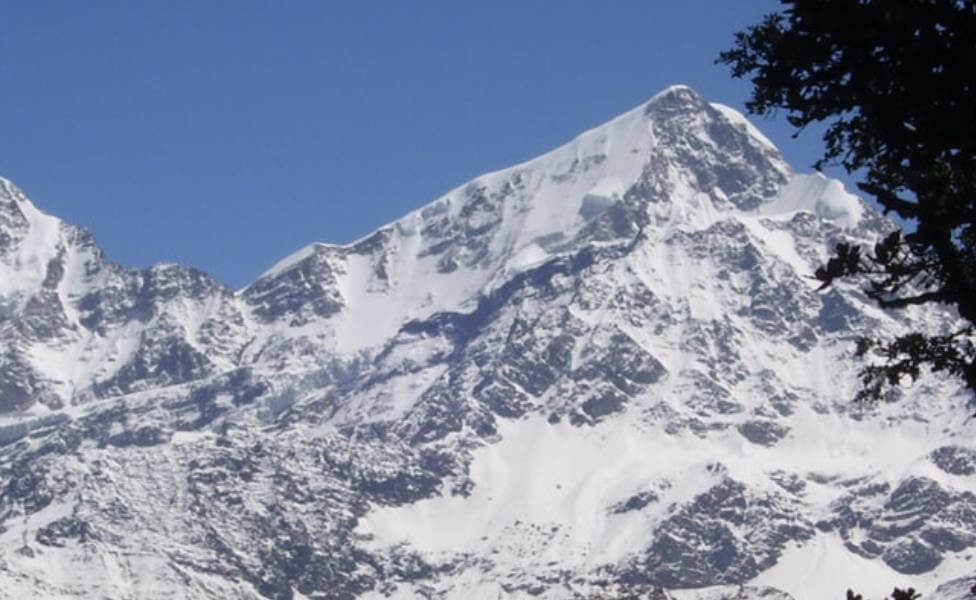
Marking the outer rim of the Nanda Devi Sanctuary, the lofty Nanda Ghunti Peak is viewed best from the meadows of Bedni Bugyal. Nanda Ghunti Peak is a climb for seasonal climbers who have both skills and patience for a prolong mountain siege. The north ridge of the peak is said to be comparatively easy to climb. However, the south ridge has some steep and narrow gullies that offer a direct opportunity for a summit bid, which can be best done under the moonlight early in the season when the gullies are snow-filled. Nanda Ghunti may be is shorter in height from the massive Trident peaks of Trishul, however, it does make a full-blown expedition that demands more than strength and skill.
Also Read: Trekking Peaks in Sikkim
Gangotri II Peak (6590mts/21615ft)
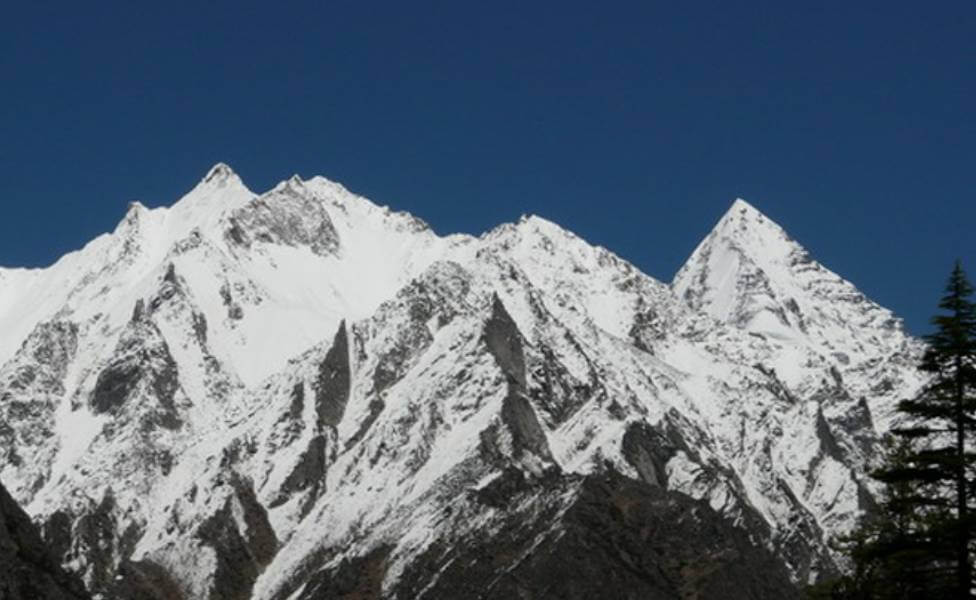
Adorning the Garhwal sky, Gangotri II is the part of the majestic Gangotri Group of Peaks that surrounds the popular Gangotri Glacier. The climbing for Gangotri II that has a height of 6590 m begins from Rudugaira Nallah and then a steep ascends through narrow couloirs lead the mountaineers to the top of the peak. Gangotri II is an open peak and it rises above the Rudugaira Glacier and is fringed by Mt. Rudugaira to its right and the popular peak of Auden’s Col to the left. The summit bid to this quite a challenging peak can be done between April and October, however, the best time to go for this peak climbing expedition is post monsoon.
Also Read: Trekking Peaks in Himachal Pradesh
Joanali Peak (6632mts/21750ft)
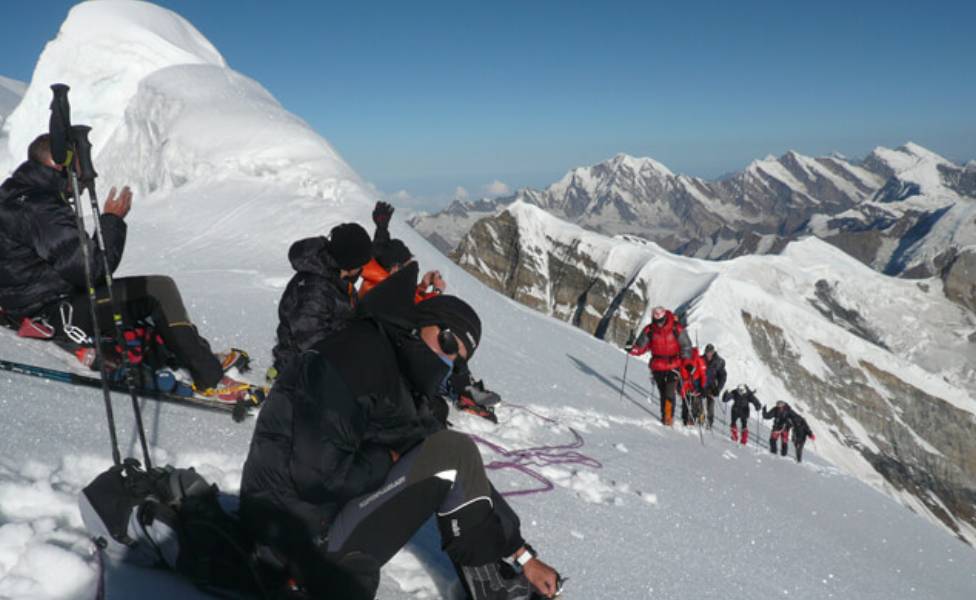
Another peak in Gangotri Group of Peaks that demands from climbers a lot of daredevilry and the right set of skills, Joanali is indeed one of the best peaks to climb in Garhwal Himalayas. Standing tall at a height of 6632 m, Joanali despite being comparatively short in elevation, is a tough peak to climb. It is dotted with tricky crevasses and steep slopes that have to be crossed in order to make a rewarding summit bid. Joanali is amongst the peaks that have been attempted in Garhwal Himalayas recently in the year 2009 but this open peak must be attempted in order to attain an exceptional experience. The best time to attempt summit bid on Joanali is between April and October, however, post-monsoon is ideal.
Also Read: Best Trekking Routes in Uttarakhand
Thalaysagar Peak (6904mts/22645ft)
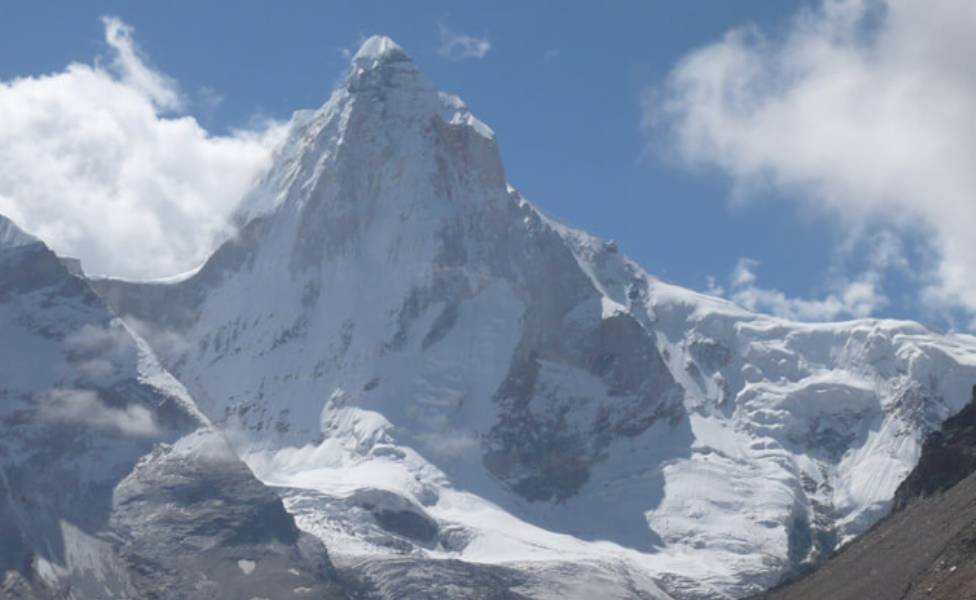
Gracing the north of Gangotri, Thalaysagar is a popular peak to climb in Garhwal Himalayas. The majestic peak is at an elevation of 6904 m and not at all an easy target. Often the determination to climb it meets the terrible avalanches, which once survived can be a rewarding experience. Thalaysagar which is the second highest peak in the south of Gangotri is also known for its steepness on all sides, which of course makes the summit bid a lot more challenging. The peak climbing expedition for Thalaysagar begins from Kedar Tal, which is its Base Camp where the weather always stays unpredictable. It is an open peak and is best-attempted post monsoon, though, it can also be done between April and September.
Also Read: Best Trekking Trails in Himachal Pradesh
Meru North Peak (6450mts/21156ft)
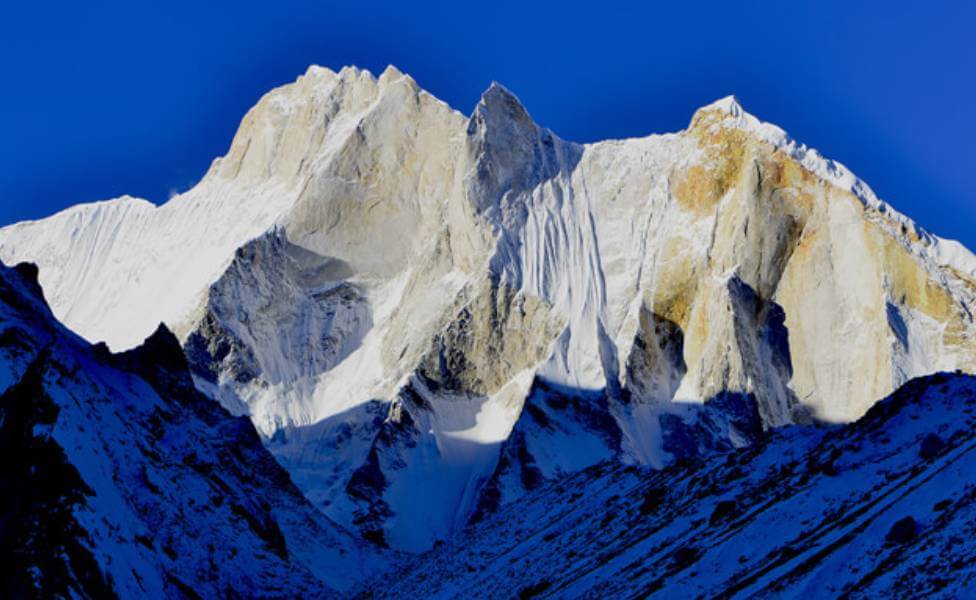
Standing in between famous Garhwal peaks of Thalaysagar and Shivling, Meru North is one of three peaks of Meru Mountain. The north peak is said to be an easier climb when compared to the Central Meru Peak. Meru North can also be seen as inspiration and motivation to attempt the central Meru Peak that has a record of being one of toughest routes in the world. The peak climbing expedition for Meru North with a height of 6450 m begins from Tapovan. The summit bid on Meru North can be done between April and October, although the post-monsoon months are preferred for this expedition.
Also Read: Top Trekking Trails in Sikkim Himalayas
Kedar Dome Peak (6830mts/22400ft)
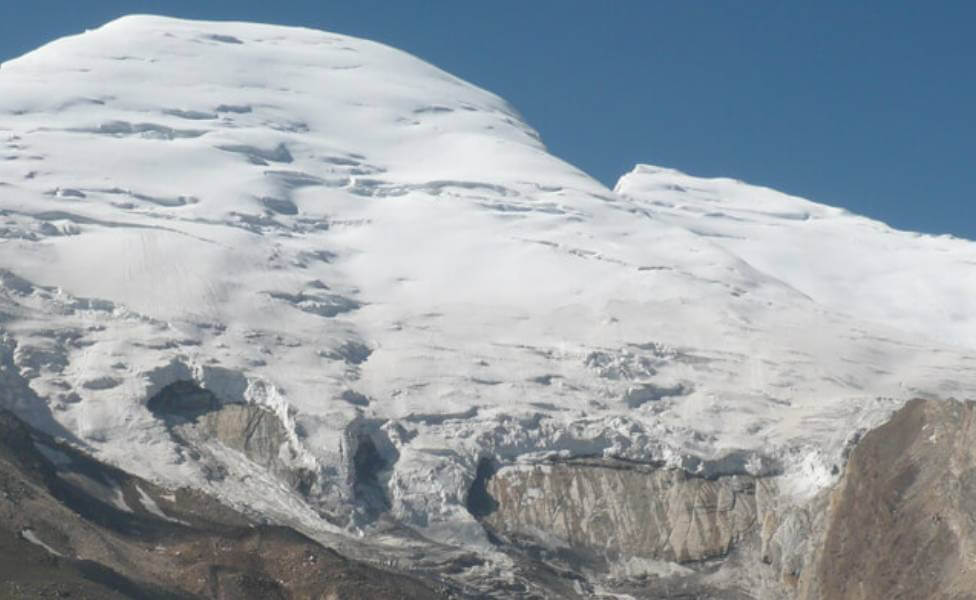
Situated in the Western Garhwal fringing the sacred Gangotri Glacier, Kedar Dome is a significant mountain peak. With a height of 6830 m, this Garhwal Himalaya is also a popular ski gradient (spring season) where even ski ascent has also been attempted. The base camp of Kedar Dome is at Tapovan from where a gruelling peak climbing adventure begins. The northwest side of Kedar Dome is comparatively easy to crest the summit and the eastern side is recorded to be the most difficult route to reach the top. Kedar Dome is an open peak that can be attempted between May and October; however, the post-monsoon months are much preferred.
Also Read: Top Trekking Destinations in Ladakh
Shivling Peak (6543 mts/21460ft)
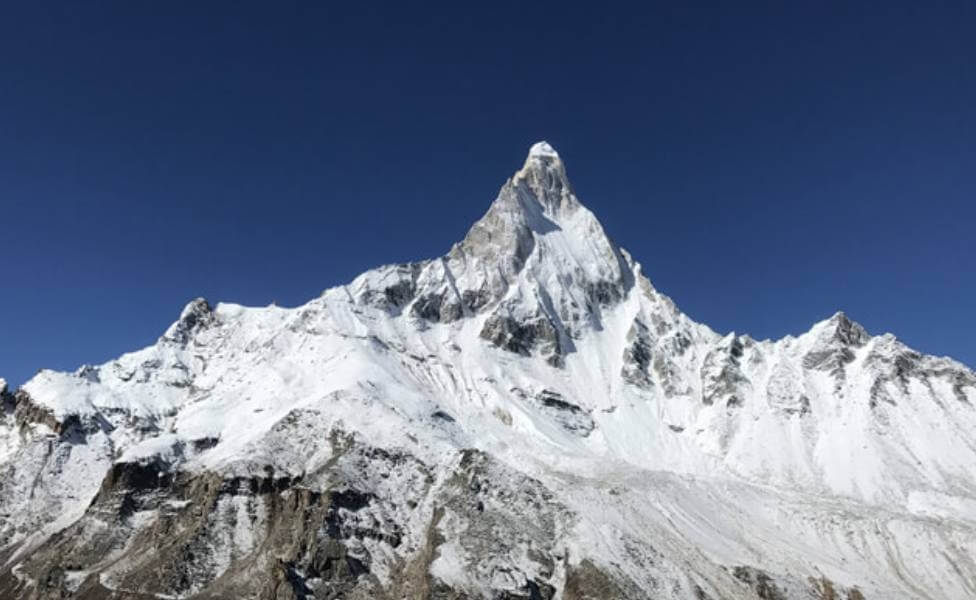
One of the best peaks in Garhwal Himalayas for alpine style expedition, Shivling forms the western gate for the lower side of the Gangotri Glacier. This peak which is also a twin-summit with the northeast peak being slightly higher than the southwest peak. Shivling has also been called as one of the gorgeous peaks in the Himalayas. It stands tall at a height of 6543 m and is steep on all sides making the ascent quite challenging. There are wide and narrow gullies that are snow-filled and allow slow movement up the ridge. There are also some areas where the climbers meet soft snow and loose rocks that with one mistake can lead a mountaineer in a basin. As one goes up the peak starts to become technically difficult. However, once on top, every effort seems worthy on the peak climbing expedition on Shivling Peak. Shivling is an open peak that can be attempted between May and October; however, the post-monsoon months are much preferred.
Also Read: Best Trekking Places in Himalayas
Vasuki Parvat (6792mts/2227ft)
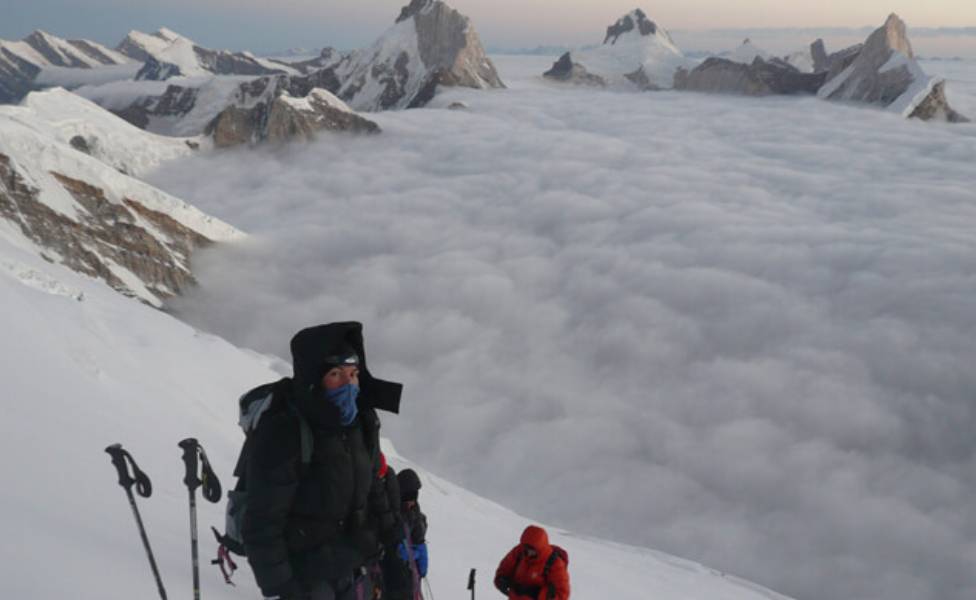
Another ornament of the Western Garhwal Himalaya, Vasuki Parvat stands majestically with the height of 6792 m. It is on this peak, weeklong lightweight alpine style ascent is possible, which means if a mountaineer wants, he can refrain from the use of fixed ropes or other bulky expedition items, also no high-altitude porters are needed for this summit. The base camp for the expedition is at Nandanvan, which is a coarse grass pasture nestled between Gangotri and Chaturangi glaciers. The north face of Vasuki Parvat is a high angle slope replete with debris and rock-fall, while both the east and west faces are a meld of steep, rapidly decomposing rocks that stays almost devoid of snow in the peak climbing season. A long steep knife-edged ridge leads to the summit of Vasuki Parvat. This climbing expedition in Garhwal can be done between April and October.
Also Read: Popular Trekking Trails in Kashmir
Satopanth Peak (7075mts/23205ft)
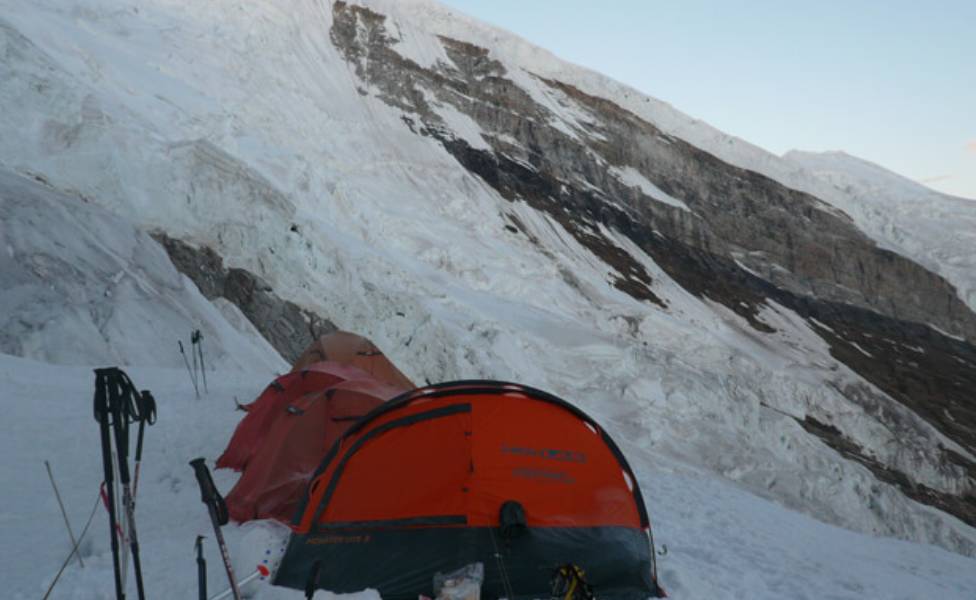
At the head of the Sundar Bamak towers the Satopanth Massif of the height of 7075 m. Satopanth is the second tallest peak of the Western Garhwal which looks like a square emerald with a ridge resembling a circus trapezium. This majestic peak of ‘Good Faith/Good Path,’ when literally translated, is a revered one and there also exists a lake and a glacier of the same name 28 km northwest of the popular pilgrimage site of Badrinath. Satopanth is a popular peak for climbing due to imposing altitude and the variety of technical permutations, and varying difficulty it offers. The climbing expedition of Satopanth begins from Nandanvan and one has to traverse a complex set of glaciers to make it to the top. The ideal time for a summit bid in Satopanth is between April and October.
Also Read: Mountain Biking Tours in India
Sudarshan Parbat (6507mts/21345ft)
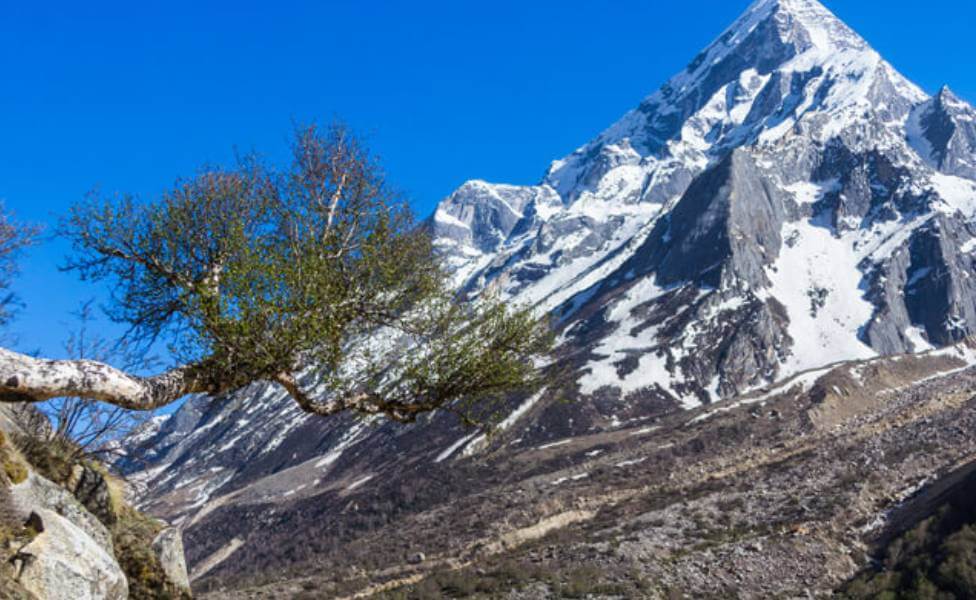
Said to be the first mountain peak visible on the right side of the Gangotri Valley, Sudarshan Parbat is yet another impressive six thousander peak in the Gangotri Group of Peaks. The base camp for Sudarshan Parbat climbing expedition begins from Raktavarn Glacier, which is adjacent with Gangotri Glacier the originating point of River Ganga. Sudarshan Parbat summit bid gets technically difficult as one has to survive extensive crevassed grounds and places with loose rocks and soft snow. There are also razor-sharp sections which make climbing a tad more challenging. However, all the weariness vanishes when crests the peak from where Gangotri Peaks and the valley, a little of Tibet and all the neighbouring peaks can be seen. Sudarshan is an open peak and can be attempted by the expedition in the months between April and October.
Also Read: 15 Best High-Altitude Trekking Tours in India Himalayas
Changabang Peak (6866mts/22520ft)
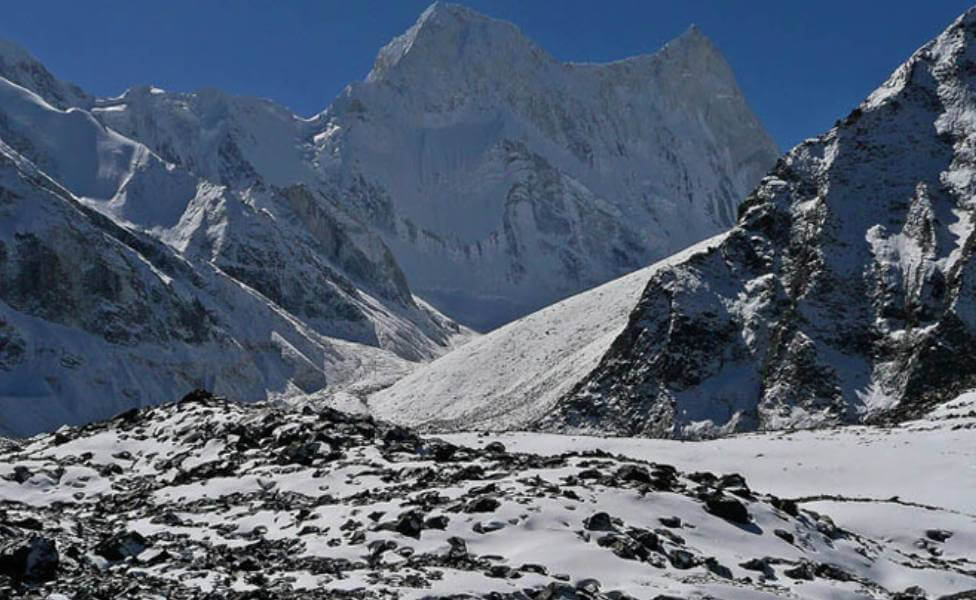
Part of the Northeastern wall of Nanda Devi Sanctuary, Changbang is definitely a challenging peak to conquer in Garhwal Himalayas. Don’t go on its comparatively shorter height, this mountain is a serious undertaking. Standing tall at a height of 6866 m, Changbang is slightly lower than Kalanka Peak but steep slopes that make ascend quite tough. The mountain challenges with steep iced-up slabs and corners and atrocious weather in the upper realms and is best done with capsule style ascent. The base camp for Changbang is at Upper Deodi from where the ascent to Advance Base Camp is quite a gruelling task, and thus, one can imagine how arduous and thrilling the rest of the North Face of the mountain would be. Changbang again is an open peak and is best attempted between April and October
Also Read: 10 Best Destinations for Spiritual Trekking in the Himalayas
Nilkantha Peak (6597mts/21640 ft)
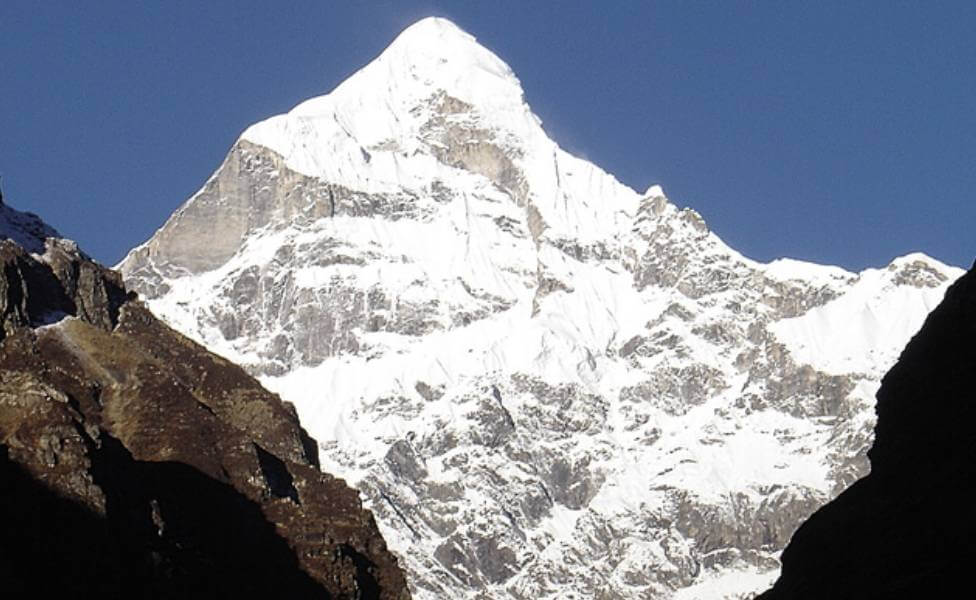
Towering over the valley where the Alaknanda River flows, Nilkantha is indeed an important peak in Garhwal Himalayas. Standing tall at an elevation of 6597 m, it is one of the most accessible peaks in the Himalayas, and one of the prettiest as well. Nilkantha is an isolated peak that allures the climbers in a special way to attempt the summit bid. The mountain has modest altitude and formidable defenses and ridges that are long, pinnacled and loose. The faces are steep and mostly avalanche prone and due to its isolated position, a local weather system can be found here. Nilkantha has four main ridges and four main faces with east face being quite dangerous, and north side being an excellent face to attempt a climb. The south side has two ridges and the lower one itself is complex to climb with loose rocks and ice. However, the west side of the south face is bounded by a rock ridge that runs to the summit of the mountain. The base camp of Nilkantha is at Badrinath and the expedition of the peak by climbing can best be done between April and October.
Other Interesting Blog to Read
Chaukhamba I Peak (7138mts/23415 ft)
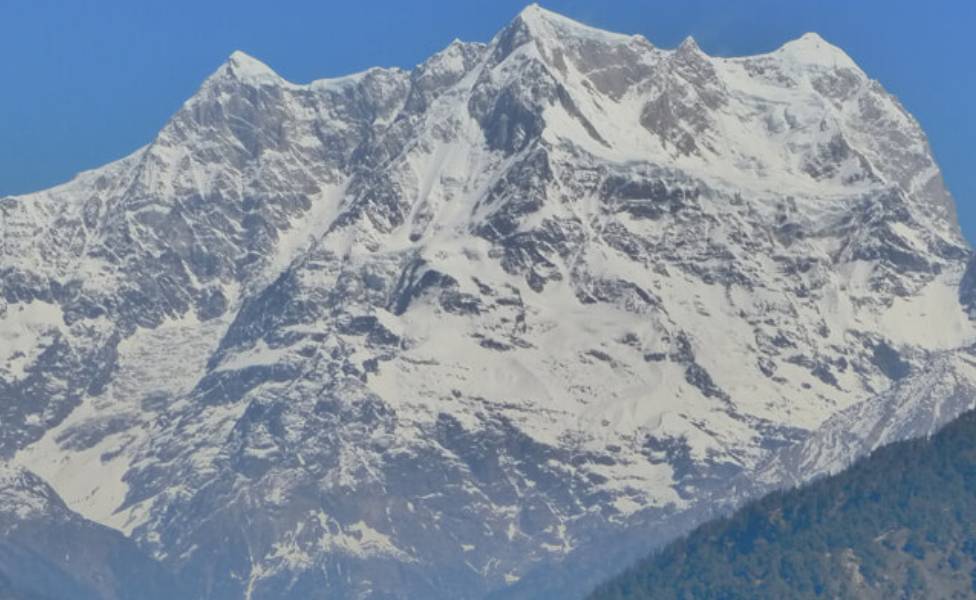
The highest peak of the Chaukhamba Massif, Chaukhamba I stands as an impregnable fortress with a height of 7138 m in the eastern anchor of the massif. The mountain has a chequered history and it has been one of the most difficult climbs for all those who have attempted an expedition due to the foul weather, steep ice-walls, crevasses, and avalanche-prone regions. Chaukhamba – I demands grueling and exhausting climb in which one has to also negotiate with avalanche-cones and of course the crevasses-prone areas. After hours of dogged determination, one becomes successful in the crest the summit and gets the reward in the form of experience and the imposing view. Chaukhamba I is an open peak and is best attempted during the months of April to October.
Other Interesting Blog to Read
Chaukhamba II Peak (7070mts/23190ft)
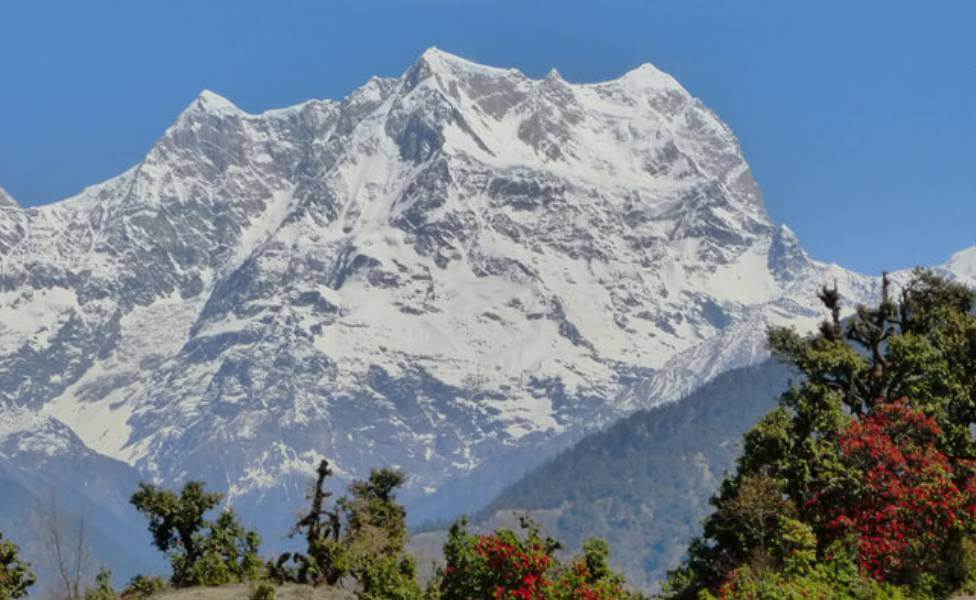
The second highest peak of the Chaukhamba Massif, Chaukhamba II is also the part of Gangotri Group of Peaks and is as challenging expedition as the Chaukhamba I. The majestic mountain has a height of 7070 m and its base camp is at Haridwar. Chaukhamba can be approached from the Northeast and Northwest Ridge and is best attempted by peak climbing expedition in the months between April and October. However, an ideal time to for summit bid would be the post-monsoon months.
Other Interesting Blog to Read
Nanda Devi East Peak (7816mts/25635ft)
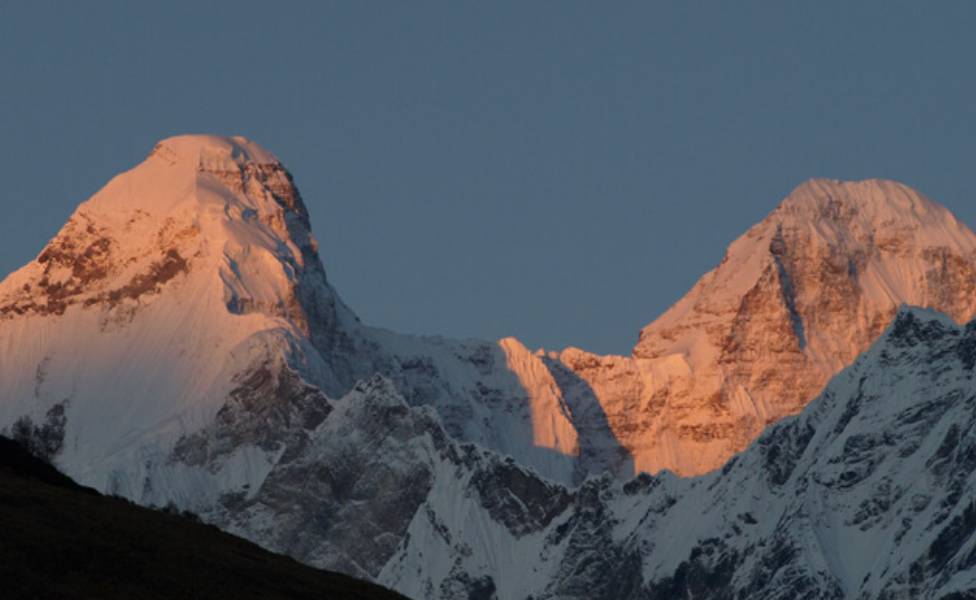
Nanda Devi East boasts being the tallest peak in India with a dizzying height of 7816 m. This one of its kind beauty in the Kumaon Himalayas has been an aspiration of many, first of course for its alluring title of being country’s highest peak and then due to the thrilling experience it has to offer. The base camp is at Bidalgwar from where a rough ascend is made to the Advance Base Camp which is at a height of 4750 m. The ascent to the Poting Glacier is quite exhilarating and so is the climb to Nanda Devi Khal (Pass). One has to climb over the rock towers which lay on the arete leading to the summit. Nanda Devi is again an open peak and is best attempted in the months between April and November.
Other Interesting Blog to Read
Panwali Dwar Peak (6663mts/21855ft)
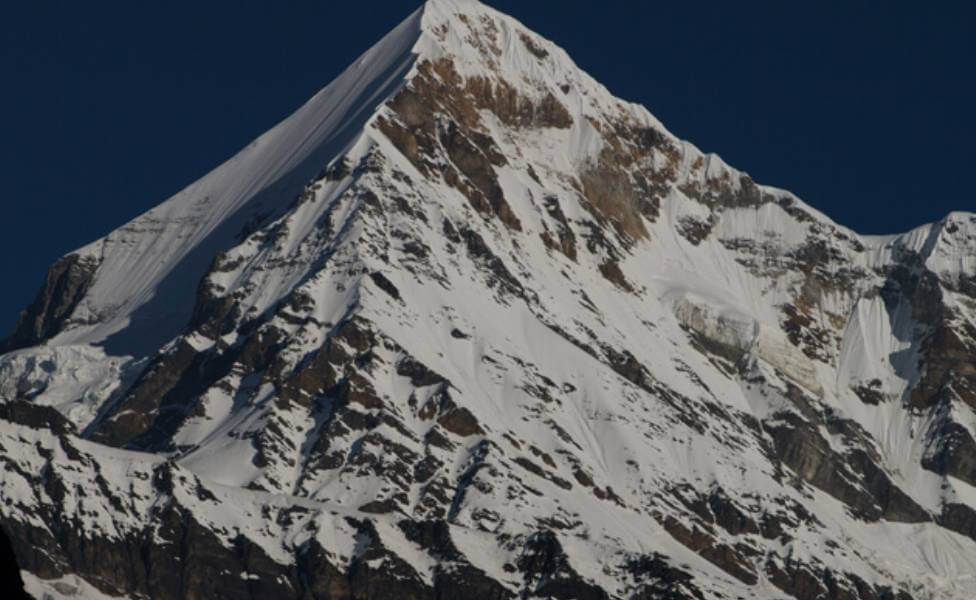
Another excellent opportunity for peak climbing in Kumaon Himalayas, Panwali Dwar is a pin-shaped peak that divides Pindar and Sunderdhunga Valley. The six thousander peak is a lesser-trodden one with steep slopes that can be extremely challenging. The mountain, however, can be climbed from Sunderdhunga or Pindari Valleys along with the beautiful south face of Nanda Kot. The most favourable base camp for the expedition is at Pindari Zero Point and the best time to attempt the summit bid are the post-monsoon months. However, climbing can be done on this open peak from April to October.
Other Interesting Blog to Read
Maiktoli Peaks (6803mts/22315ft)
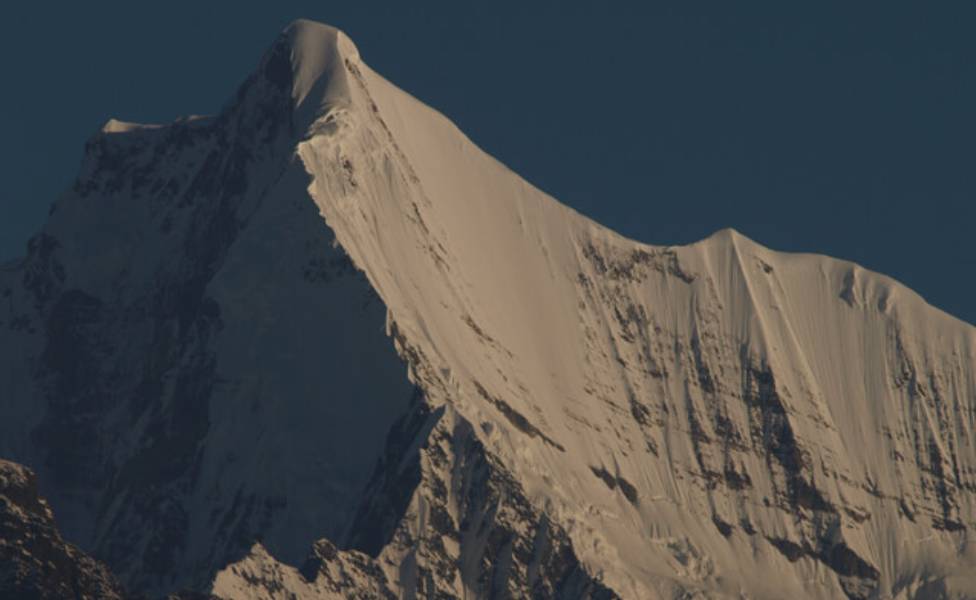
One of the major summits in the Sunderdhunga Valley of Kumaon Region, Maiktoli is yet another lesser trodden mountain in Uttarakhand. Standing with a height of 6803 m, Maiktoli is adjoined to r Devtoli and Mrithuni by a ridge in the northeast direction. Sunderdhunga BC is the base camp for Maiktoli which can be climbed through a long and dangerous route crossing the glacier of the same name as the mountain. It is an open peak and is best attempted during the post-monsoon months. However, one can also take up the climb in the months between April and October.
Other Interesting Blog to Read
Nanda Kot Peak (6861mts/22505ft)
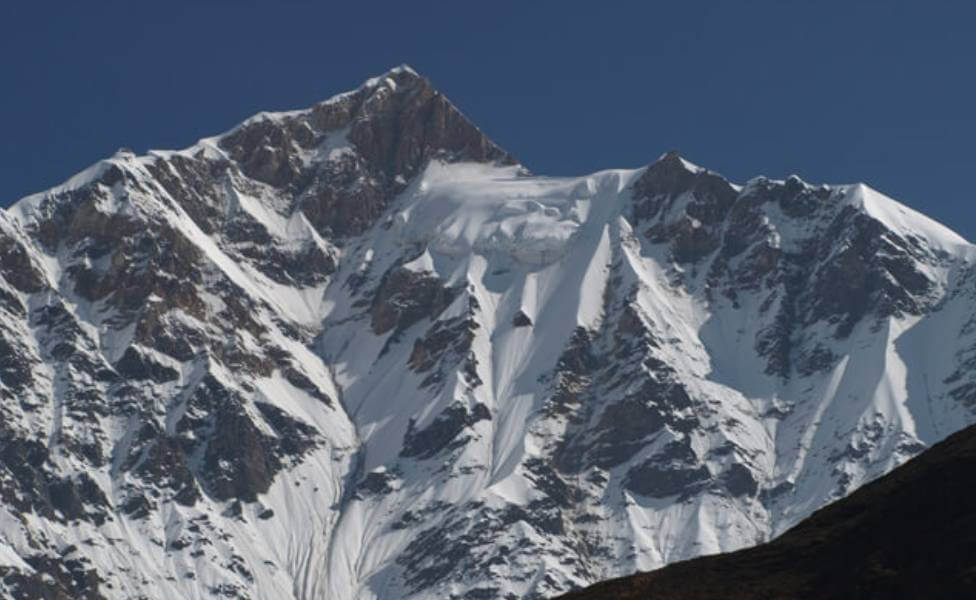
Towering with a height of 6861 m, Nanda Kot is situated in the Kumaon Himalayas where the Kafani, Pindar, Lawan, and Shalang glaciers drain it from south, west, north and east sides. The base camp for this six thousander peak is at Pindari Zero Point from where an arduous climb begins. The mountaineers have to traverse several difficult crevasses, and in fact, in one place one has to cross directly beneath a hanging wall where an avalanche is possible. However, there are patches that offer swift traversing and faster climb but otherwise, the climb to the top is strenuous and slow but the views from the top are quite rewarding. Nanda Kot is an open peak and is best attempted in the post-monsoon months, however, climbing is allowed throughout April to October.
Other Interesting Blogs to Read
New Update- Uttarakhand Government reveals 30 new unexplored peaks and 10 high-altitude new trails
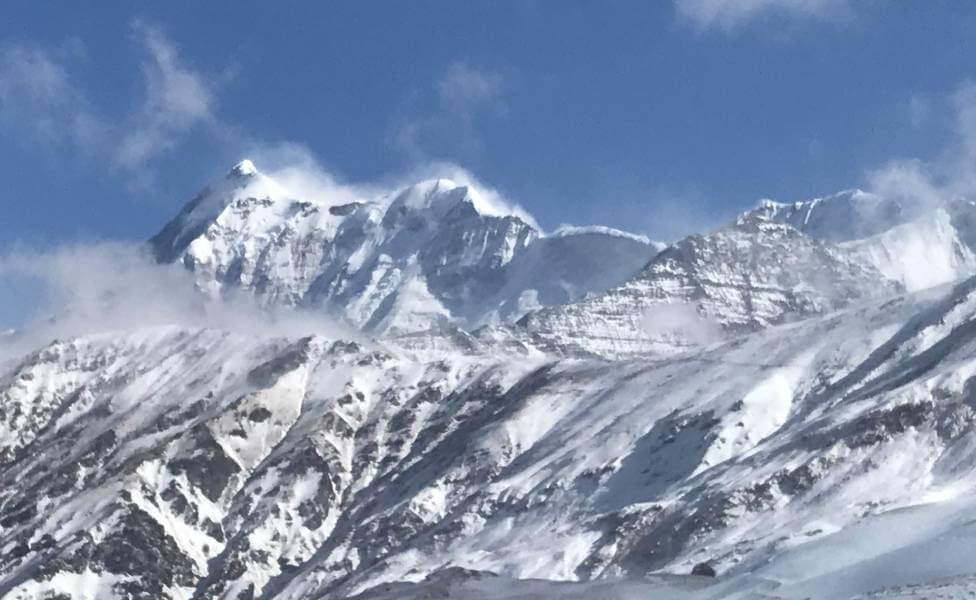
Trekkers, Be Ready For New Expeditions: 30 new unexplored peaks and 10 high-altitude new trails are revealed
Good news for mountaineer & trekkers. A new era in mountaineering & trekking is going to begin as the Uttarakhand Government has introduced 30 new unexplored peaks and 10 high-altitude new trekking routes in July 2022. The new trekking peaks have been unveiled by the government to promote adventure tourism in Uttarakhand and the important part about this announcement is that enthusiasts from India as well as foreign countries, can explore these new Himalayan peaks. In addition to this, trekkers can now see 11 more peaks as they scale these new unexplored peaks.
Speaking of the unexplored peaks in Uttarakhand, revealing the 30 new peaks and 10 high-altitude trails has been a major part of the decision taken by the central government in 2019 to allow trekkers exploring new 137 Himalayan peaks spread across Himachal Pradesh, Sikkim, Uttarakhand and Jammu & Kashmir. Most of the unexplored peaks are situated at a height of more than 6,000 metres and only 12 teams with a total of 10 members can scale the peaks twice a year.
Glimpse of the new announcement
- A total of 30 new unexplored peaks are going to be added to the list of Uttarakhand Himalayan Expedition tourism
- Another 11 peaks can be seen while trekking to these peaks.
- A total of 10 high-altitude trekking routes have been opened.
- Most of the peaks are situated above 6,000 metres from sea level.
- Only 12 teams with 10 members can explore the peaks twice a year.
- Another adventure trekking tourism update related to these new trekking trails in Uttarakhand is that the state government has decided to take an amount of Rs. 10,000 per team to protect the areas from littering and other environmental issues.
- This amount will be refunded based on the supervision of personnel who will monitor how tidy the team kept the place.
- The maps of the new trekking routes will be developed with the help of the local eco-development committee.
- The state government is also optimistic about the development of the people living along the routes of these new unexplored peaks.
Some of the new 30 peaks are:
- Avalanche (6,443 metres)
- Bharigu Parvat (6,041 metres)
- Kalidhang (6,373 metres)
- Chirbas Parvat (6,529 metres)
- Balakun (6,471 metres)
- Betartholi: (6,352 metres)
- Betartholi South (6,318 metres)
- Garur Parvat (6,507 metres)
- Garur Forked (6,267 metres)
- Parvati Parvat (6,257 metres)
- Purbi Dunagiri (6,489 metres)
- Dangthal (6,050 metres)
- Devisthan I (6,678 metres)
- Devisthan II (6,529 metres)
- Devtoli (6,788 metres)
- Dunagiri (7,066 metres)
- Janhukot (6,806 metres)
- Lampak South (6,234 metres)
- Manda II (6,529 metres)
- Manda III (6,510 metres)
- Nanda Bhanar (6,269 metres)
- Nanda Khani (6,029 metres)
- Panchachuli II (6,904 metres)
- Panchachuli III (6,312 metres)
- Panchachuli IV (6,334 metres)
- Rishi Kot (6,236 metres)
- Rishi Pahar (6,992 metres)
- Sumeru Parbat (6,330 metres)
10 new high-altitude trekking trails:
- Narayan Parbat (5,965 metres)
- Nar Parbat (5,885 metres)
- Lamchir South (5,209 metres)
- Lamchir (5,662 metres)
- Bhagnyu (5,706 metres)
- Pawagarh (5,306 metres)
- Mahalay Parbat (5,947 metres)
- Yan Buk (5,953 metres)
- Ratnagiri (5,885 metres)
- Nanda Lapak (5,782 metres)
If you liked this blog, please give it a like share it with your adventure-loving friends.
There are many packages available at our website which will give you an idea about these amazing Indian Himalayas destinations. In addition to these available trekking trails, we are also adding the new peaks to our exploring list which you must check if you want to be a part of the newest expeditions. For any assistance and details of these trails, contact us immediately. We can guarantee you that you will never regret choosing us.
For more on peak climbing in Uttarakhand or anywhere in the Himalayas, feel free to call us on +91-9212553109 or mail at info@tourmyindia.com.
Other Important Uttarakhand Trekking Tourism Related Resources
Like & Follow our social media accounts at Twitter, Facebook, Linkedin & Instagram for getting the latest updates & offers on holiday packages.
Disclaimer: This content is written by our team of expert Travel Writers with deep research. In case you find any incorrect information or missing information, please do send your valuable inputs at webmaster@tourmyindia.com. We will update the content as soon as possible with respect to your inputs.
We do not take credit for some of the licenced paid images used in our blogs, whether from Google Images, Fotolia & Shutterstock. All such images are the copyrights of their respective owners and we try to provide credit for them wherever we can. If, however, any copyright image has been used on our blog, the concerned person can either mail us directly to remove the image or provide credit to whomsoever the image may belong to.
Frequently Asked Questions
Which are the best trekking peaks to explore in Uttarakhand Himalayas?
Some of the best trekking peaks to explore in Uttarakhand Himalayas are:
- Kedarnath Peak (6,992 metres)
- Kedar Dome Peak (6,830 metres)
- Trishul I Peak (7,145 metres)
- Shivling Peak (6,543 metres)
- Nanda Ghunti Peak (6,309 metres)
- Gangotri II Peak (6,590 metres)
- Vasuki Parvat (6,792 metres)
- Joanali Peak (6,632 metres)
- Thalay Sagar Peak (6,904 metres)
- Nilkantha Peak (6,597 metres)
Does Tour My India offer Peak Climbing Expedition tours for Uttarakhand Himalayas?
Yes, Tour My India offers Peak Climbing Expedition tours for Uttarakhand Himalayas. Our expertise in this field along with our guidance will surely provide you with the best experience in the Himalayas. For any details, you can contact us directly.
Which is the highest Peak in Uttarakhand?
Nanda Devi (7,816 metres) is the highest mountaineering peak in Uttarakhand.
About the author
Having an experience of more than 16 yrs in the Himalayas, Arun is the main driving force & mentor at the Peak Adventure Tours, a leading adventure travel agency in India offers trekking tours in Indian Himalayas including Nepal, Bhutan & Tibet. A long history with exceptional experiences he is the “Marathon Man” in the field of adventure. Today Arun looks after the Peak Adventure and shapes & designs the venture of the organization. He is contributing to this blog as a regular guest author.

 +91-9212777225
+91-9212777225 Plan Your trip
Plan Your trip